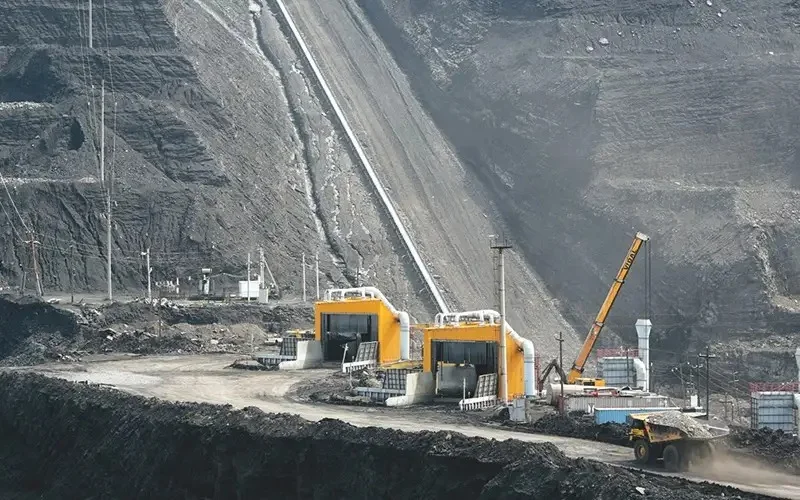The future of Kazakhstan’s mining industry - expert insight
The mining industry, which provides for humanity’s basic needs, went through a turbulent 2024. Rising costs, geopolitics, and shifting demand put additional pressure on the sector. Kazinform News Agency spoke with Bauyrzhan Burkhanbekov, head of PwC Kazakhstan’s audit practice, about the key takeaways and future outlook.

— The recently published global report describes 2024 as a year of contrasts for mining. What were the defining numbers, and what do they suggest for the sector’s future?
— Indeed, 2024 was a difficult year for the global mining industry, except for gold producers. Revenue and EBITDA (earnings before interest, taxes, depreciation, and amortization) of the largest companies, excluding gold miners, dropped by 3% and 10% respectively.
The combined revenue of the 40 biggest companies, excluding trading, reached $689 billion, up 1% compared to 2023. Yet EBITDA fell by 5% to $193 billion, and margins slipped from 24% to 22%.
These figures highlight not only the current trends but also the need to rethink strategies. In a fragmented world shifting toward new energy sources, mining faces systemic challenges. The future of the industry will depend on how well companies adapt, invest in technology, and build resilient supply chains.
Amid shifting macroeconomic conditions and rising costs, companies are paying closer attention to risks and the resilience of their business models. Reliability and transparency remain key to building trust in the mining sector. In this context, companies are focusing on diversifying supply chains and expanding their geographic footprint to reduce dependence on specific regions.
A major step in this direction has been the growing focus on critical minerals such as lithium, cobalt, and rare earth elements. Demand for these resources is expected to increase as battery production for electric vehicles expands and the shift toward clean energy accelerates.

— What are the risks of mineral resource concentration, and how do they play out in specific countries, including Kazakhstan?
— The risks of high mineral concentration stem from both natural and human factors. Mineral reserves are distributed extremely unevenly across the planet, and even with advanced exploration and new technologies, their geography cannot be changed or new deposits created. This means certain regions hold unique resources on which the global economy depends.
At the same time, mining and processing are influenced by many external factors: government policy, access to financing, infrastructure, and regional stability. As a result, not only reserves but also production capacities are increasingly concentrated in a limited number of countries. For instance, China accounts for more than 50 percent of global output in 18 types of minerals, while the US dominates in seven. This creates serious imbalances between where resources are mined and where they are consumed.
Kazakhstan is a vivid example of such concentration. In 2024, it supplied 38 percent of the world’s uranium, remaining the largest producer. However, a significant share of production is carried out by Russian companies, raising concerns in the context of sanctions pressure linked to the geopolitical situation.
— What international initiatives are being implemented to strengthen the reliability of critical mineral supply chains?
— In response to rising risks from concentrated mineral resources, more countries and regions are investing in resilience, technological innovation, and strategic autonomy. While this can increase resource costs, it also improves the reliability and flexibility of global supply chains.
Governments in countries such as Australia, Canada, Chile, the EU, and the US have developed strategies for critical minerals aimed at diversifying production and expanding the geographic reach of supplies. These strategies include tax incentives, access to government funding, and streamlined licensing for exploration. For example, the number of cobalt-producing countries grew from 7 in 2000 to 16 in 2024.
— What long-term factors will shape the mining industry in the coming decades?
— First, population growth and urbanization: by 2050, the urban population is expected to double, with around 70 percent of people living in cities. This will increase demand for mineral resources, despite advances in recycling and material efficiency.
Second, the energy transition. Moving toward a low-carbon economy requires large volumes of critical minerals, driving new projects and expanded production.
Climate change also plays a role: extreme weather increases energy consumption, while droughts, floods, and rising sea levels create risks for logistics and infrastructure. Warming trends are expected to open Arctic shipping routes year-round, potentially reshaping global supply chains. Arctic nations, including Canada and the US, are already investing in infrastructure and strengthening their regional presence.
Finally, technological innovation and automation will boost productivity, cut costs, and improve safety. Autonomous vehicles and digital solutions are being widely implemented in new mines, while existing operations adopt technologies selectively, where economically viable.
Earlier, Kazinform News Agency reported that Kazakhstan and the EBRD plan to strengthen cooperation on critical minerals and sustainable infrastructure.
